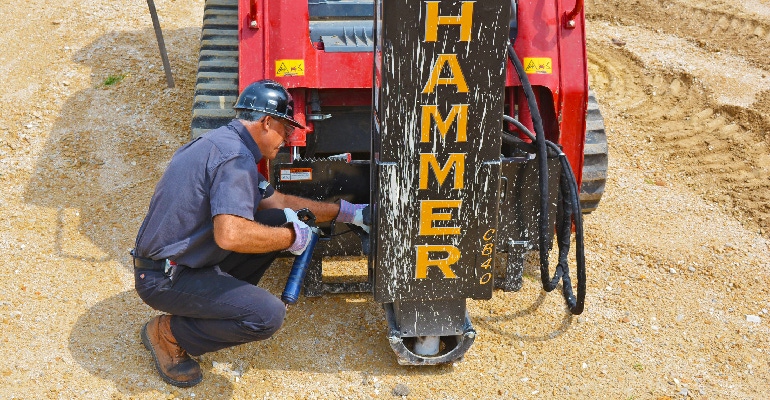Fall is an important time to start thinking about winter maintenance. Here are a few things to consider before the snow flies.
August 9, 2017

Sponsored Content
As we finish haying for the year and turn our attention to pasture and fence repairs, we can’t help but notice the daylight fading faster. Long hot summer days will soon be giving way to cool mornings and a renewed urgency to get those last-minute chores done before winter sets in. With the long list of projects still looming, it’s easy to overlook one of the most important items on that list: preparing your attachments for winter. Attachments not needed for winter work will need to be cleaned, lubricated, covered, and stored away until the grass begins to green next spring. We recently visited with Glenn Danuser, fourth generation co-owner of Danuser, for his winter preparation tips.
1. Check over your attachments for damage, paint that needs to be touched up, leaking hoses, or broken parts. Late fall is a good time to order parts and make repairs without interrupting projects, especially if the attachment needs to be serviced by a dealer.
2. Consider purchasing new attachments. If you’ve had your eye on a new piece of equipment for the farm, consider making the purchase before winter. Sometimes there are tax advantages, and this way you’ll have plenty of time to review the operator’s manual and familiarize yourself with the piece before you need it in the field.
3. Change the oil, grease the zerks, and sharpen the blades. This probably goes without saying, but these simple things are the lifeblood of your attachments. They’ll last longer and work better with regular maintenance so take the time to do it right.
4. Link your hose couplers together to keep them clean and sealed. We see a lot of hoses with the couplers laying down on the ground or covered in dust. Anything that makes it into the vehicle coupler bank could enter your hydraulic system. Take time to clean them properly.
5. Set them up for a long winter’s nap with care. Make the most out of your covered storage, but be sure to consider which pieces you’ll need first next year. If you must leave a piece outside, it’s a good idea to cover it with a tarp whenever possible. It’s also a good idea to think about situations when you might need to get a piece out of storage in a hurry, like if a heavy snow breaks a limb and takes out a section of fence. You’ll want to be able to get the chainsaw, fence stretcher, wire winder, and post pounder out quickly, so leave them in an accessible place.
With Glenn’s tips and a little planning, your attachments should be ready to work right out of the shed next spring!
About the Author(s)
You May Also Like



